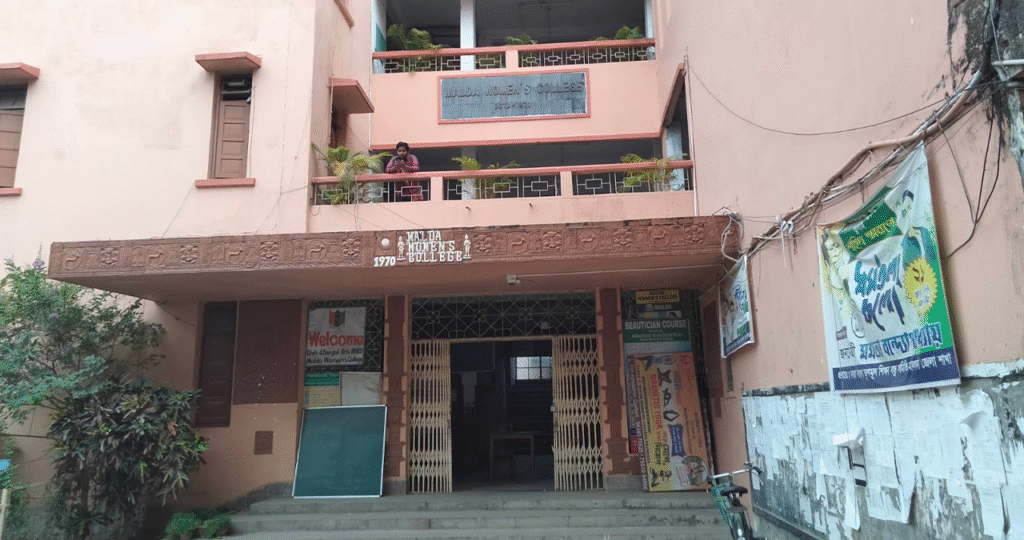Use our Staff Selection Commission – SSC Marks Calculator to estimate scores for CGL, CHSL, MTS & GD. Learn raw mark calculation, negative marking, and normalization step-by-step.
The SSC exam stands for the Staff Selection Commission exams, which are administered to employ candidates for a variety of different positions in the Indian government’s ministries, departments, and organisations. Since its establishment in 1975, it has played a significant role in hiring personnel for a range of Group B and Group C positions.

Introduction: Why You Need to Understand SSC Marks Calculation
If you’ve ever appeared for an SSC (Staff Selection Commission) exam like CGL, CHSL, MTS, GD, or JE, you’ve probably found yourself wondering, “How exactly do they calculate my marks?” The official scorecards only tell part of the story, and the rest is hidden behind complex processes like normalization, tier-based scoring, and negative marking.
This is where the concept of an SSC Marks Calculator becomes crucial — not just as a tool, but as a strategy to track, predict, and plan your success. In this blog, we’ll break down how SSC marks are calculated, how normalization affects your final score, and how you can estimate your result before it’s declared.
 SPPU Result 2025 Declared: Check Unipune Results for B.Ed, BCA, MBA, and More at unipune.ac.in →
SPPU Result 2025 Declared: Check Unipune Results for B.Ed, BCA, MBA, and More at unipune.ac.in →What is an SSC Marks Calculator?
An SSC Marks Calculator is a smart method or tool that helps you estimate your final marks after considering:
- Raw marks based on correct and incorrect answers
- Negative marking
- Shift-wise normalization (if applicable)
- Combined tier scores (for multi-stage exams)
It’s especially helpful because SSC conducts exams in multiple shifts, and raw scores alone can’t show your real standing unless normalization is considered.
Step-by-Step: How SSC Examiners Actually Calculate Marks
Let’s walk through how the Staff Selection Commission arrives at your final score:
 WBJEE Result 2025 Released – Check Your Rank Online →
WBJEE Result 2025 Released – Check Your Rank Online →1. Raw Marks Calculation
The first stage is simple mathematics.

Formula:
Raw Marks=(Correct Answers×Marks per Question)−(Wrong Answers×Negative Marking)\text{Raw Marks} = (\text{Correct Answers} \times \text{Marks per Question}) - (\text{Wrong Answers} \times \text{Negative Marking})Raw Marks=(Correct Answers×Marks per Question)−(Wrong Answers×Negative Marking)
Each SSC exam has its own marking pattern:
- SSC CGL, CHSL: +2 for correct, -0.50 for incorrect
- SSC MTS, GD: +1 for correct, -0.25 for incorrect
- Unattempted Questions: 0 marks
Example:
In SSC CGL Tier-I:
 PUBDET 2025 Result Live: WBJEE Declares Excellent Scores →
PUBDET 2025 Result Live: WBJEE Declares Excellent Scores →- You attempt 80 questions
- 70 are correct, 10 are wrong
Then:
(70×2)−(10×0.5)=140−5=135 marks(70 \times 2) – (10 \times 0.5) = 140 – 5 = \textbf{135 marks}(70×2)−(10×0.5)=140−5=135 marks
2. Normalization of Marks (If Exam Held in Multiple Shifts)
Normalization is not optional — it’s mandatory when exams are held in multiple sessions. Why? Because no two shifts are of identical difficulty.
SSC applies a normalization formula based on the mean and standard deviation of each shift.

Standard Formula Used by SSC:
Normalized Marks=(Your Marks−Mean of your ShiftSD of your Shift)×SD of All Shifts+Mean of All Shifts\text{Normalized Marks} = \left(\frac{\text{Your Marks} - \text{Mean of your Shift}}{\text{SD of your Shift}}\right) \times \text{SD of All Shifts} + \text{Mean of All Shifts}Normalized Marks=(SD of your ShiftYour Marks−Mean of your Shift)×SD of All Shifts+Mean of All Shifts
This ensures fairness across easier and tougher shifts. A candidate who appeared in a difficult shift but performed well might get higher normalized marks than raw marks.
Note: The exact values (mean, SD) are determined statistically and aren’t made public, but your final score always reflects normalization if applicable.
3. Final Score Calculation (Tier-Wise)
Most SSC exams are multi-tiered. Here’s how they’re structured:
| Exam | Tiers | Final Score Calculation |
|---|---|---|
| CGL | Tier-I + Tier-II + Tier-III (Descriptive) | Combined score |
| CHSL | Tier-I + Tier-II | Combined score |
| MTS | Tier-I only | Final marks after normalization |
| GD | CBT + Physical + Medical | CBT marks + physical/medical qualifying |
So, the SSC Marks Calculator must consider cumulative scoring based on tiers.
Real-Life Example: Using an SSC Marks Calculator for CGL
Let’s say you attempted SSC CGL Tier-I:
- Correct Answers: 72
- Incorrect Answers: 8
- Unattempted: 20
Raw Score Calculation: (72×2)−(8×0.5)=144−4=140(72 \times 2) – (8 \times 0.5) = 144 – 4 = 140(72×2)−(8×0.5)=144−4=140
Now, suppose:
- Mean of your shift = 120
- SD of your shift = 15
- Mean of all shifts = 125
- SD of all shifts = 20
Then normalized score: (140−12015)×20+125=(1.33)×20+125=26.6+125=151.6 normalized marks\left(\frac{140 – 120}{15}\right) \times 20 + 125 = (1.33) \times 20 + 125 = 26.6 + 125 = \textbf{151.6 normalized marks}(15140−120)×20+125=(1.33)×20+125=26.6+125=151.6 normalized marks
This is what SSC will use to rank you.
Why You Should Use an SSC Marks Calculator
Using a SSC marks calculator isn’t just about curiosity — it’s a serious preparation tool. Here’s why:
- Know Your Standing: Estimate how you’re performing compared to others.
- Cut-Off Analysis: Predict whether you’re likely to clear the cut-off.
- Improve Accuracy: Learn from your mistakes by analyzing which sections hurt your score.
- Guide Preparation: Focus on scoring zones in the next tier or attempt.
Where Can You Find Reliable SSC Marks Calculators?
There are several websites that offer SSC marks calculators, such as:
- Gradeup / BYJU’s
- Testbook
- Oliveboard
- Unofficial tools by coaching centers
However, be cautious:
- Use calculators from trusted platforms
- Enter accurate data
- Don’t assume normalized marks are 100% accurate — they’re estimates
Tips for Improving Your SSC CGL Score Calculation Strategy
- Practice as much as you can: practice with mock tests regularly, which will eventually help you increase your accuracy on the exam day and help you get a grip on your speed and performance.
- Understand the Score Scheme: Read and grasp the grading system carefully. Don’t attempt random guesses when you are clueless about the answers. There is no negative marking for unattempted questions, but there is one for incorrect answers.
- Time Management: Practice solving questions within the allotted time. This improves efficiency. Managing time is essential while preparing for competitive exams (both Prelims and Mains)
- Analyse Your Results: After each mock test that you give, calculate your score and analyse your results. Check where you lack, what your strong and weak points are, and then prepare accordingly. Revise and then attempt again.
- Focus on Accuracy: Since there’s negative marking, ensure that you only answer questions that you are confident about.
Final Thoughts: Stop Guessing, Start Calculating
While preparing for SSC exams, don’t idly hope for the best. Begin calculating your score and figure out where you stand. Such SSC Marks Calculators give you an idea of your position, a sense of direction, a little control about what to do next and clarity of thoughts, which is essential to crack competitive exams.
Knowing how to evaluate your SSC score for both Prelims and Mains is essential to help you strategise your preparation efficiently and improve your chances of selection. With the proper understanding of the marking scheme, you can track your progress, manage time better, and improve your performance. By focusing on accuracy, regular practice, and result analysis, you’ll surely clear the SSC CGL 2025 exam.
Understanding raw marks, normalization, and final score logic will also help you keep calm and composed, and avoid unnecessary panic when results finally release. The wittier you are about the numbers, the more confidently you’ll walk into your next exam hall.
SSC Marks Calculator: F.A.Q
1. What exactly is an SSC Marks Calculator?
An SSC Marks Calculator is a helpful tool that students use after appearing in SSC exams to estimate their expected marks. It calculates your score by factoring in the number of correct and incorrect answers, the marking scheme of the exam, and — in some cases — the normalization process. It gives a fairly good idea of how you might perform before the official results are announced.
2. How can I calculate my raw score in an SSC exam?
To work out your raw score, you need to follow a simple formula:
Raw Score = (Number of Correct Answers × Marks for Each Question) − (Number of Incorrect Answers × Penalty Marks)
For example, if each question is worth 2 marks and there’s a 0.50 mark penalty for wrong answers, you can plug your attempt stats into the formula to get your estimated score.
3. What does normalization mean in the context of SSC exams?
Normalization is a system used by SSC to balance score differences caused by varying difficulty levels in different exam shifts. Since the same exam is conducted over several sessions, normalization ensures that no candidate is unfairly advantaged or disadvantaged due to tougher or easier question sets in their specific shift.
4. Does SSC apply negative marking in all of its exams?
Most SSC exams do have a negative marking system. For example, in SSC CGL and CHSL, 0.50 marks are deducted for every incorrect answer, while in other exams like SSC GD or MTS, the deduction might be different. Always refer to the specific notification of the exam for the exact rule.
5. Is it possible to estimate my final SSC score using a calculator?
Yes, it is. Many students use SSC marks calculators to get a close estimate of their final score, especially after answer keys are released. While the actual result may vary slightly due to normalization, these calculators give a reliable performance forecast.
6. Are online SSC marks calculators trustworthy?
These calculators are fairly accurate when it comes to raw score calculation. The only part they can’t perfectly predict is normalization, since the official difficulty scaling formula isn’t public. However, they are still useful for understanding where you stand.
7. Are marks from Tier 1 and Tier 2 counted separately in SSC exams?
Yes. All the tiers of SSC exams like CGL or CHSL are evaluated separately. Depending on the exam, both Tier 1 and Tier 2 scores may be combined for the final merit, while some tiers might only be qualifying in nature. The selection process differs depending on the exam category.
8. Does SSC provide its own marks calculator?
No, SSC does not officially release any calculator tool. Although, several trusted education portals and coaching websites have developed their own SSC marks calculators to help candidates evaluate their performance.
9. Do SSC calculators include the descriptive exam scores too?
Usually not. Online SSC marks calculators are designed for objective papers only- the multiple-choice questions ones. Descriptive papers, like those in SSC CGL Tier-III or CHSL Tier-II, are graded manually and cannot be assessed by online score estimators.
10. Why is it beneficial to use an SSC marks calculator?
Using a marks calculator helps you stay ahead and track your wins and losses. Instead of waiting anxiously for results, you get a reasonable estimate of your score. You can plan for the next tier, prepare your documents for verification. It also helps you stay calm and mentally brace yourself for the next steps ahead in the recruitment process.
Also Read: Malda Women’s College Admission 2025 – Courses, Fees & More
 Balurghat Law College: Is It Still a Smart Choice in 2025? →
Balurghat Law College: Is It Still a Smart Choice in 2025? →





